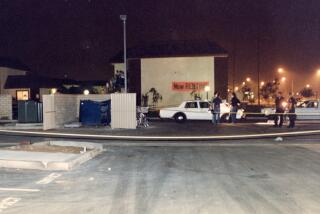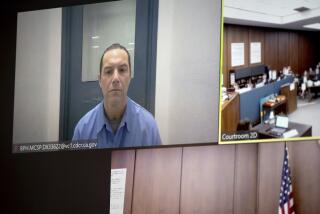2 Kinds of DNA to Be Cited in Trial
- Share via
Two kinds of DNA evidence -- one of which has never been used in a California court -- will be allowed in the trial of a man accused of kidnapping and killing 5-year-old Samantha Runnion, an Orange County judge ruled Thursday.
Prosecutors say mitochondrial and YSTR DNA link Alejandro Avila, 29, with the child, who was kidnapped outside her Stanton condominium July 15, 2002. Her body was found the next day in the Santa Ana Mountains, miles from Avila’s Lake Elsinore apartment.
“There have been no sister state or federal court cases that have rejected YSTR or mitochondrial DNA,” Superior Court Judge William R. Froeberg said in his ruling, which followed five weeks of testimony from 11 scientists.
Mitochondrial DNA -- genetic information pulled from the energy-producing mitochondria outside a cell’s nucleus -- has been used four times in California, most recently in the murder trial of Scott Peterson of Modesto, who was convicted Nov. 12 of murdering his wife and unborn son. It can be found in hair samples, even those without roots or that are old and fragmented. It is typically used in trials when the more definitive nuclear DNA analysis is not available.
YSTR DNA is taken from the Y chromosome and found only in males, making it useful in sexual assault cases when a female’s DNA is so abundant that it masks the male’s. It has been used in other states but never in California.
Although the two DNA types do not provide links as direct as nuclear DNA, they can identify a person down to the maternal and paternal family lines, drastically reducing the number of possible people who could have produced it.
Neither prosecutors nor defense attorneys have said where the DNA evidence in the Avila case came from. Testimony presented during the hearing indicated that the YSTR DNA came from a hair and that the mitochondrial DNA was pulled from underneath the fingernails of Samantha’s left hand.
Avila’s attorneys had protested the admission of DNA, saying the evidence could have been contaminated and attacking the motives of the prosecution’s experts.
“They stand to gain financially from increased admission of this evidence,” said Deputy Public Defender Philip Zalewski in his closing statement.
Another defense issue is the size of the databases used to show the likelihood that a DNA sample came from a particular person. The database the prosecutor is using does not include California, a fact that also concerned the judge.
“I certainly have reservations that the database that was used in this case excluded California,” Froeberg said. “Unfortunately, my concerns aren’t relevant, given what seems to be accepted in the scientific community.”
A more focused version of the testimony presented at the hearing is expected to be provided to the jury, attorneys said, with the jury then allowed to decide how to interpret a link between the victim and the suspect.
“The issues raised by the defense go to the weight that the jury will give to the evidence, not admissibility,” Froeberg said.
Deputy Dist. Atty. Camille Hill said after the ruling that the judge made the correct decision. “He endorsed the procedures, and he based it on case law,” she said.
She declined to say what effect the DNA evidence could have on the trial. Jury selection is expected to begin Feb. 28.
Deputy Dist. Atty. Susan Kang Schroeder, a spokeswoman for her office, said the DNA evidence was “part of the puzzle.”
“It is important, but it isn’t the most important piece of evidence,” she said. “It’s part of the many layers of evidence.”
A hearing on the defense’s motion to move the trial out of Orange County will continue next week.
More to Read
Sign up for Essential California
The most important California stories and recommendations in your inbox every morning.
You may occasionally receive promotional content from the Los Angeles Times.









